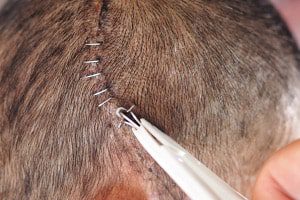
The U.S. Food and Drug Administration has announced that it has identified more than 40,000 reports of complications for surgical staplers and implantable staples. The agency published this information in a public release on March 8, as well as in a letter sent to medical providers the same day. A growing number of adverse events […]

Surgical stapler complications
The U.S. Food and Drug Administration has announced that it has identified more than 40,000 reports of complications for surgical staplers and implantable staples. The agency published this information in a public release on March 8, as well as in a letter sent to medical providers the same day.
A growing number of adverse events associated with the use of surgical staplers and staples has been submitted to the FDA, the agency said. In ongoing analysis of adverse event reporting on the two devices, the FDA found that a total of 41,000 individual reports were submitted from January 1, 2011, to March 31, 2018, regarding complications from either staplers or staples for internal use.
The submitted reports included information about malfunctioning of the staplers or staples (described in 32,000 reports), along with serious injuries (described in 9,000 reports) and even death (described in 366 reports). The FDA indicated that it had received numerous additional adverse event reports in the form of Alternative Summary Reports, and the agency is still reviewing those.
The FDA’s letter and release follow an investigation from Kaiser Health News that reviewed Alternative Summary Reports sent to the FDA regarding medical devices. The investigation found that reports of malfunction and serious injury regarding approximately 100 different medical devices had been sent as Alternative Summary Reports when they should have been submitted as adverse events and medical device reports, that’s why we have Surgical Staples Misfiring and Implantable Staples Malformation Attorney Lawsuit.
The Alternative Summary Report program was overhauled in 2017 (the Voluntary Malfunction Summary Reporting Program) and served as another option for quarterly summary reporting. Kaiser Health News described the program as a “hidden repository” for adverse events, including adverse events from surgical staplers and staples. Staplers and staples are not eligible devices for the Voluntary Malfunction Summary Reporting Program, according to the FDA.
In its communications on March 8, the FDA stated that the majority of the adverse events it flagged for staplers and staples described misfiring of the staplers, failure of the staplers to fire at all, and malformation of the staples. The FDA said that problems identified in the reports could likely be predominantly attributed to the staplers for internal use because appropriate stapling was contingent on proper functioning of the staplers.
Currently, surgical staplers are classified as Class I medical devices, which means that stapler manufacturers do not have to submit premarket documentation to the FDA before selling the devices. Given the growing number of adverse events and the likelihood that many of them are associated with the staplers, the FDA is considering changing surgical staplers to Class II devices. This would trigger an obligation on the part of the manufacturers to adhere to regulatory requirements.
The FDA said reclassification would be discussed at a committee meeting that the agency planned to call sometime in 2019. The FDA also said it was planning to draft new guidance on labeling for surgical staplers and staples. The guidance will make recommendations on risk and use information that should appear in the device labels, and it will be open for public comment during 2019.
In closing its letter to health care providers, the FDA made recommendations for doctors for the present time. The agency advised doctors to carefully follow all device instructions in existing labeling and to refrain from using, or consider alternatives to, surgical stapling in some patients. In situations of thick tissue, necrotic tissue, or patients with a history of bleeding events, surgeons should consider other options, the FDA said.


